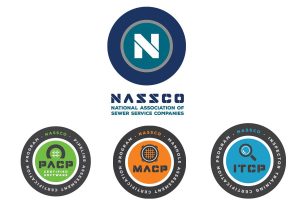Concept Paper Example About Education: A Complete Guide
A concept paper example about education serves as a blueprint for innovative ideas in the field, guiding educators, administrators, and policymakers. It outlines the goals, significance, and methodology behind a proposed educational initiative, prompting insightful discussions.
Whether you aim to introduce a new curriculum, implement technology in the classroom, or address current educational challenges, a clear concept paper can drive your vision forward. Dive into this article to explore practical examples, tips, and insights for crafting your own effective concept paper.
Concept Paper Example About Education
Creating a concept paper about education involves outlining a specific idea or proposal that addresses a problem or need within the educational system. A concept paper often serves as an initial step in seeking support, funding, or approval for a particular educational project or program. In this section, we will explore how to structure a concept paper focused on education, providing examples and guidance to ensure clarity and effectiveness.
Understanding the Purpose of a Concept Paper
Before diving into the specifics, it’s essential to know why concept papers are important in education. A well-crafted concept paper accomplishes several key objectives:
- Clarifies the Idea: It provides a clear description of the educational concept or project.
- Addresses a Need: It identifies the problem that the proposal aims to solve.
- Engages Stakeholders: It invites input and support from potential partners, funders, or the community.
- Serves as a Roadmap: It outlines the steps needed to implement the idea effectively.
Understanding these goals helps in crafting a concept paper that is coherent and compelling.
Structure of a Concept Paper
A concept paper typically follows a structured format that includes specific sections. Here is an overview of the common sections found in an education-focused concept paper:
Title
The title should be concise yet descriptive. It should reflect the main focus of your concept paper.
Introduction
In the introduction, present the background of your educational concept. Explain why this idea is relevant and important. You might want to include statistics or anecdotes that highlight the significance of the issue at hand.
Example: “In the United States, nearly 30% of students report feeling disengaged from school. This concept paper proposes the implementation of a tutoring program that connects high-achieving students with their peers who struggle in certain subjects.”
Statement of the Problem
Clearly articulate the problem your concept paper addresses. Use facts and data to support your claims.
Example: “Research shows that students who receive individualized support perform better academically. However, many schools lack the resources to provide such support, leaving struggling students at risk of falling further behind.”
Objectives
Outline the specific objectives of your project. What do you aim to achieve?
Example:
- To improve the academic performance of underperforming students.
- To foster peer relationships and collaborative learning.
- To create a sustainable tutoring framework within schools.
Proposed Solution
Here, detail your proposed educational program or initiative. Explain how it works and what makes it effective.
Example: “The tutoring program will match high-achieving students with those who need assistance in specific subjects. Sessions will be held after school, focusing on areas where students struggle most. The program will provide training for tutors and continuous support to ensure effective learning.”
Implementation Plan
Discuss how you plan to put your idea into action. Include timelines, resources, and key personnel involved.
Example:
- Phase 1: Recruitment of tutors (Month 1-2)
- Phase 2: Training and preparation (Month 3)
- Phase 3: Launch of tutoring sessions (Month 4)
- Phase 4: Evaluation and feedback gathering (Month 6)
Budget Overview
Provide an estimated budget for implementing your program. Break down the costs into categories to give a clear picture.
Example:
| Item | Estimated Cost |
|——————————|—————-|
| Recruitment materials | $500 |
| Training resources | $1,000 |
| Tutor compensation | $2,000 |
| Evaluation tools | $300 |
| **Total** | **$3,800** |
Evaluation and Assessment
Explain how you plan to measure the success of your initiative. What metrics will you use to assess progress?
Example: “We will use pre- and post-program assessments to measure academic improvement. Additionally, student surveys will help gauge engagement and satisfaction levels.”
Conclusion
Summarize the main points of your concept paper and reiterate the significance of your proposed solution. Encourage stakeholders to support your initiative.
Example: “By implementing this tutoring program, we can help bridge the gap for struggling students, fostering a more equitable educational environment. Support from our community will be instrumental in making this initiative a success.”
Tips for Writing an Effective Concept Paper
Writing a concept paper can be challenging, but with the right approach, you can create a persuasive and comprehensive document. Here are some tips:
- Be Concise: Keep your writing clear and to the point. Avoid jargon and complex language.
- Use Visuals: Incorporate tables, charts, or images to break up text and illustrate key points.
- Engage the Reader: Write in a conversational tone to keep the reader interested.
- Proofread: Always check for grammar and spelling errors to ensure professionalism.
Examples of Concept Papers in Education
To further illustrate how to write a concept paper, let’s look at a few examples of successful educational initiatives.
Example 1: After-School Reading Program
**Title:** The Importance of Reading: An After-School Program for Struggling Readers
**Introduction:** Many children struggle with reading, impacting their overall academic performance. This program aims to provide additional support for students who need it most.
**Objectives:**
– To foster a love for reading.
– To improve reading skills among participants.
– To engage parents in their children’s literacy development.
**Proposed Solution:** Implement after-school reading sessions, led by trained volunteers, focusing on enjoyable reading activities.
**Evaluation:** Use reading assessments and parent feedback to measure the effectiveness of the program.
Example 2: Technology in the Classroom
**Title:** Integrating Technology in Elementary Education
**Introduction:** Technology has transformed the way we learn. This project seeks to incorporate technology into daily classroom activities to enhance learning outcomes.
**Objectives:**
– To improve students’ tech literacy.
– To make learning more interactive and engaging.
– To prepare students for a digital future.
**Proposed Solution:** Provide training for teachers and resources for integrating technology into their lessons, such as tablets and educational software.
Example 3: Emotional Wellness Curriculum
**Title:** A New Approach to Student Mental Health: Emotional Wellness Curriculum
**Introduction:** Mental health challenges are prevalent among students. This curriculum aims to equip students with tools to manage their emotions and stress.
**Objectives:**
– To promote mental health awareness.
– To provide coping strategies for students.
– To create a supportive school environment.
**Proposed Solution:** Introduce a curriculum focusing on emotional intelligence, mindfulness, and peer support groups.
The Importance of Feedback in Concept Papers
Once you’ve drafted your concept paper, seeking feedback is crucial. Here’s how to gather input effectively:
- Peer Review: Ask colleagues to read your paper and provide constructive criticism.
- Stakeholder Input: Present your concept to potential stakeholders early on to gather insights and suggestions.
- Revise Accordingly: Use the feedback to make necessary improvements to your paper.
Receiving and incorporating feedback can significantly enhance your concept paper’s clarity and effectiveness.
Common Mistakes to Avoid
When writing a concept paper, avoid these common pitfalls:
- Lack of Clarity: Ensure your main idea is clearly stated and easy to understand.
- Overly Complex Language: Use simple language that everyone can understand.
- Neglecting the Target Audience: Tailor your content to the specific needs and interests of your audience.
- Ignoring Formatting: Follow a consistent structure and format to make your paper easy to read.
Final Thoughts on Concept Papers in Education
Concept papers play a vital role in advancing educational initiatives. By clearly outlining your ideas and presenting a well-structured proposal, you can attract interest and support for your project. Always remember to keep your audience in mind, highlight the importance of your proposal, and be open to feedback and revisions.
A concept paper about education is not just a document; it’s a chance to inspire change and improve the learning experiences of students. With careful planning and execution, you can create a compelling concept paper that stands out and motivates others to join your cause.
By investing time into creating a thoughtful and engaging concept paper, you lay the foundation for potential success in your educational endeavors. Your dedication to enhancing education can lead to impactful changes that benefit students, schools, and communities.
How To Write a Concept Paper for Academic Research l Structure of a Concept Paper l step by step
Frequently Asked Questions
“`html
What is the purpose of a concept paper in education?
A concept paper in education serves to outline a proposed project or initiative. It clearly defines the objectives, significance, and methodology involved. By doing so, it helps stakeholders understand the project’s scope and get support for further development and funding.
What elements should be included in an education concept paper?
An effective education concept paper should include several key elements: a clear title, an introduction that outlines the problem or need, the objectives of the project, the methodology to be used, the expected outcomes, and a budget estimate. Additionally, it may include a literature review to support the proposed approach and a timeline for implementation.
How can a concept paper impact educational policy?
A well-crafted concept paper can influence educational policy by presenting evidence-based solutions to pressing issues. It can inform decision-makers, provide data to support funding requests, and advocate for changes in curriculum, teaching methods, or resource allocation. By clearly articulating needs and strategies, it can drive policy discussions and decisions.
Who is the intended audience for an education concept paper?
The intended audience for an education concept paper typically includes educators, school administrators, policymakers, and potential investors or funding bodies. By targeting these groups, the concept paper aims to garner support, solicit feedback, and initiate dialogue about the proposed educational initiative.
How does a concept paper differ from a full proposal?
A concept paper provides a preliminary outline and overview of an idea, while a full proposal offers detailed plans, including extensive research, project management strategies, and specific budget breakdowns. The concept paper acts as a pitch to gauge interest and secure initial support, whereas the full proposal goes into much greater detail to seek formal approval and funding.
“`
Final Thoughts
A concept paper example about education provides a clear framework for developing educational initiatives. It outlines the goals, objectives, and expected outcomes, making it easier for stakeholders to understand the project’s significance.
By presenting key ideas concisely, such a paper plays a vital role in gaining support and funding. Ultimately, a well-crafted concept paper can pave the way for effective solutions in the education sector and drive meaningful change.












